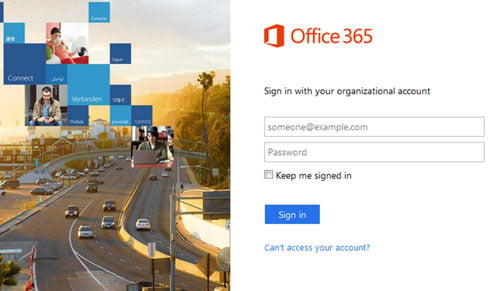
In an increasingly mobile-centered world, business needs are changing, and so are the tools their employees use.
For maximum convenience and productivity, it’s vital to make your intranet (and all the resources in it) accessible to employees via mobile devices. But how can you maintain security and oversight with so many different devices connecting to your portal?
Office 365’s Enterprise Mobility Suite (EMS) is providing organizations with a solution. EMS allows businesses to transition to the future of mobility in the cloud without compromising security. Here are a few of the core benefits EMS delivers:
Discover the Secrets to a Thriving Intranet. Learn How to Budget for Your Platform, Set a Timeline, and Get Employee Buy-in.
Mobile Access
EMS allows users to access thousands of apps and services on any device. This flexibility makes it possible for your employees to use Office 365 apps and resources anywhere. Whether your workers are on the road or working from home, EMS ensures that they don’t have to wait to get back to the office to get things done.
Single Sign-On
One way businesses provide mobile access to their intranets is by forcing users to log in to every app or service individually—sometimes with different usernames and passwords.
These users even have to go through different login processes depending on the devices they are using. While this system can help shore up security, it also poses a major inconvenience for employees. Remembering passwords and usernames is tough—especially if you want people to use different credentials every time.
Ready to Plan Your Intranet? Download Our Planning Checklist And Put Your Deployment On The Path To Success.
The result of a fragmented login system like this is people will start reusing passwords and your help desk will get overwhelmed with requests to reset credentials. By implementing single sign-on across devices, apps, and services, EMS ensures the productivity (and sanity) of your users and IT team.
Conditional Access
Similar to how checks and balances work at the government level, conditional access is a check on the single sign-on feature of EMS.

A single sign-on is more convenient than requiring users to input different credentials at every checkpoint, but it is riskier because, when a phone or tablet falls into the wrong hands, it can give an unauthorized person access to all your company’s intranet resources. Conditional access allows you to establish user-by-user, device-by-device, or app-by-app policies, to control who has access to what. Some parts of the intranet might be open to everyone. Others might require two-factor authentication or other safeguards.
EMS can even detect suspicious behavior and implement conditional access to counteract potential threats. This feature helps ensure security and compliance without infringing upon the convenience mobility can provide.
Mobile Device Management
One dilemma companies face is how to open their intranets to mobile devices. Should employees be allowed to access mobile resources on their own devices? Or should the company assign phones and tablets for team members to use when accessing intranet resources?
With EMS, businesses have a built-in Mobile Device Management (MDM) system to manage the devices connecting to the intranet. MDM makes it easy to enroll devices so they can access or install corporate apps and resources. If an employee loses his or her phone, the IT team unenrolls the device in MDM, and just like that, all corporate data, apps, logins, and resources will be selectively wiped from the phone.

In other words, the phone will become just another gadget, rather than a key to your enterprise’s systems and proprietary information. The same process can be used to retire old hardware when team members replace their phones or tablets.
Machine Learning
We mentioned previously that EMS has the built-in ability to detect suspicious behavior and potential risks. How is this type of functionality possible? The answer is machine learning, provided by Microsoft’s Advanced Threat Analytics system, or ATA.
ATA learns and evolves over time, becoming adept at spotting potential attacks or breaches. It learns how different users and devices typically act and uses that information to detect abnormalities that indicate red flags. If ATA spots a potential attack, it will alert you, providing a report that details the nature of the suspicious behavior and what it might mean. This technology helps IT teams detect and stop hacks, malware, and other attacks before they cause real damage.
Just like public websites, corporate intranets must be responsive if enterprises want to remain competitive. And yet, many organizations have not gotten on board because SharePoint is not responsive out of the box. If you want to get the greatest ROI from your platform, it’s worthwhile to invest in professional intranet design that delivers a responsive interface.
In the coming years, mobility will be an essential component of every intranat, and you can bet that Office 365 and the Microsoft Enterprise Mobility Suite will pave the way.
Share
